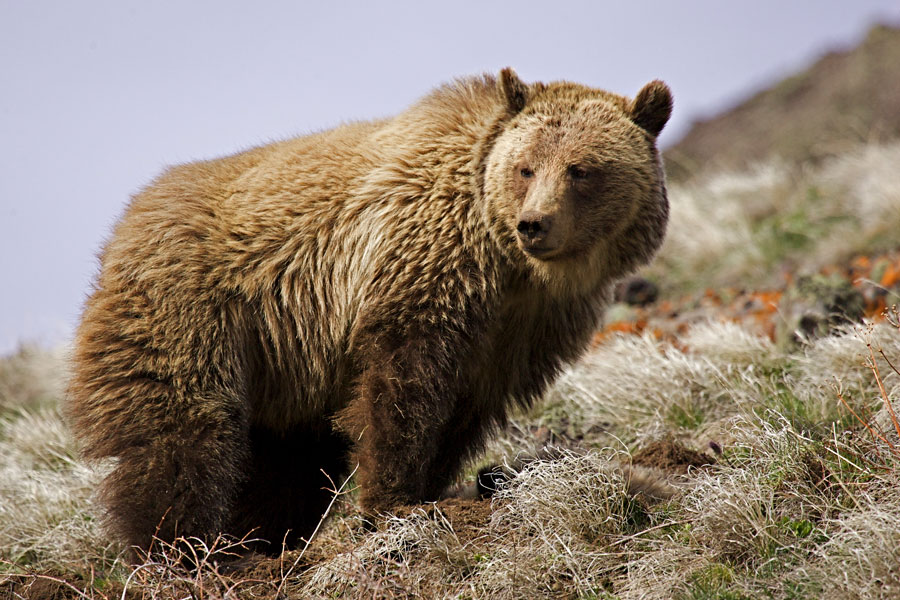BILLINGS – Grizzly bears are slowly expanding the turf where they roam in parts of the northern Rocky Mountains but need continued protections, according to government scientists who concluded that no other areas of the country would be suitable for reintroducing the fearsome predators.
The Fish and Wildlife Service on Wednesday released its first assessment in almost a decade about the status of grizzly bears in the contiguous U.S. The bruins are shielded from hunting as a threatened species except in Alaska.
Grizzly populations grew over the past ten years in two areas — the Yellowstone region of Wyoming, Montana and Idaho, with more than 700 bears; and around Glacier National Park in Montana, which is home to more than 1,000 of the animals.
Grizzly numbers remain low in other parts of the Northern Rockies, and scientists said their focus is on bolstering those populations rather than reintroducing them elsewhere in the country.
The bears now occupy about 6% of their historical range, up from 2% of that range in 1975.
Conservationists and some university scientists have pushed to return bears to areas including Colorado’s San Juan Mountains and California’s Sierra Nevada.
The 368-page assessment makes no recommendation on the topic, but scientists looked at the possibility of bears in more areas as part of an examination of their remaining habitat.
That analysis showed grizzlies would be unable to sustain themselves in the San Juans, the Sierra Nevada or two other areas that officials examined — Utah’s Uinta Mountains and New Mexico’s Mongollon Mountains.
“They were looking for areas that could sustain grizzly bears as opposed to areas that would continuously need for humans to drop bears in there,” said Hilary Cooley, the Fish and Wildlife Service’s grizzly bear recovery coordinator.
In each case, officials said, bears would face the same challenge: not enough protected public lands, high densities of humans and little chance of connecting with other bears populations to maintain healthy populations.
Tens of thousands of grizzlies once populated western North America before hunting, trapping and habitat loss wiped out most by the early 1900s. The bears were last seen in California in the 1920s and the last known grizzly in Colorado was killed by an elk hunter in 1979.
Grizzly bears have been protected as a threatened species in the contiguous U.S. since 1975, allowing a slow recovery in a handful of areas. An estimated 1,900 live in the Northern Rockies of Wyoming, Montana, Idaho and Washington state.
The Center for Biological Diversity sued the Fish and Wildlife Service in 2019 in a bid to force officials to consider restoring grizzlies to parts of California, Colorado, New Mexico, Arizona, Utah, Nevada and Oregon. A U.S. District judge ruled last year that the government was not compelled to draft recovery plans for the bears in new areas.
Protections for bears in the Yellowstone region were lifted under President Donald Trump but later restored under a court order just as Idaho and Wyoming prepared to hold public hunts for grizzlies for the first time in decades.
Interior Secretary Deb Haaland, who oversees the Fish and Wildlife Service, co-sponsored legislation to increase protections for bears while she was a member of Congress. She declined to say how she would approach the issue when questioned during her February confirmation hearings.
